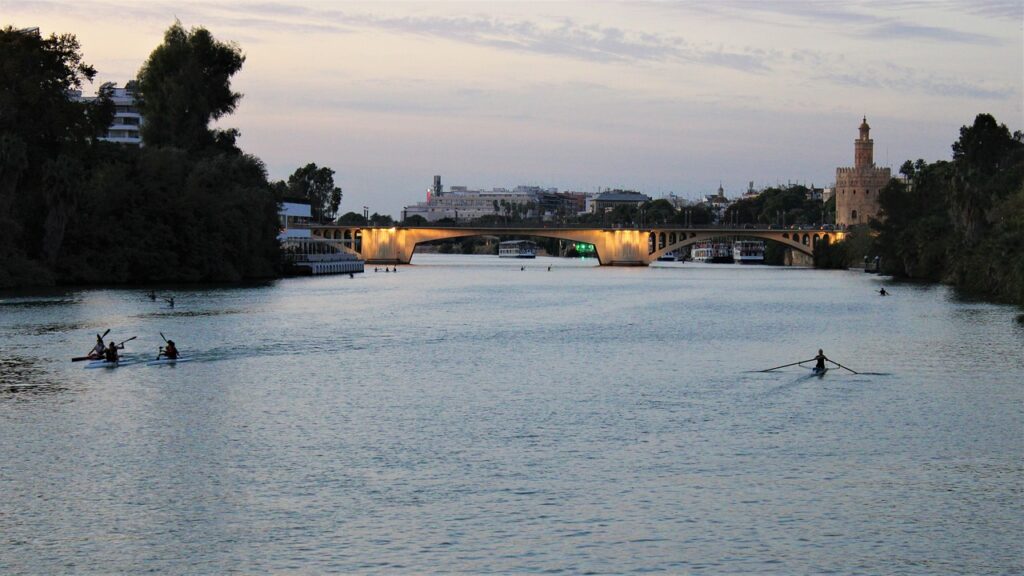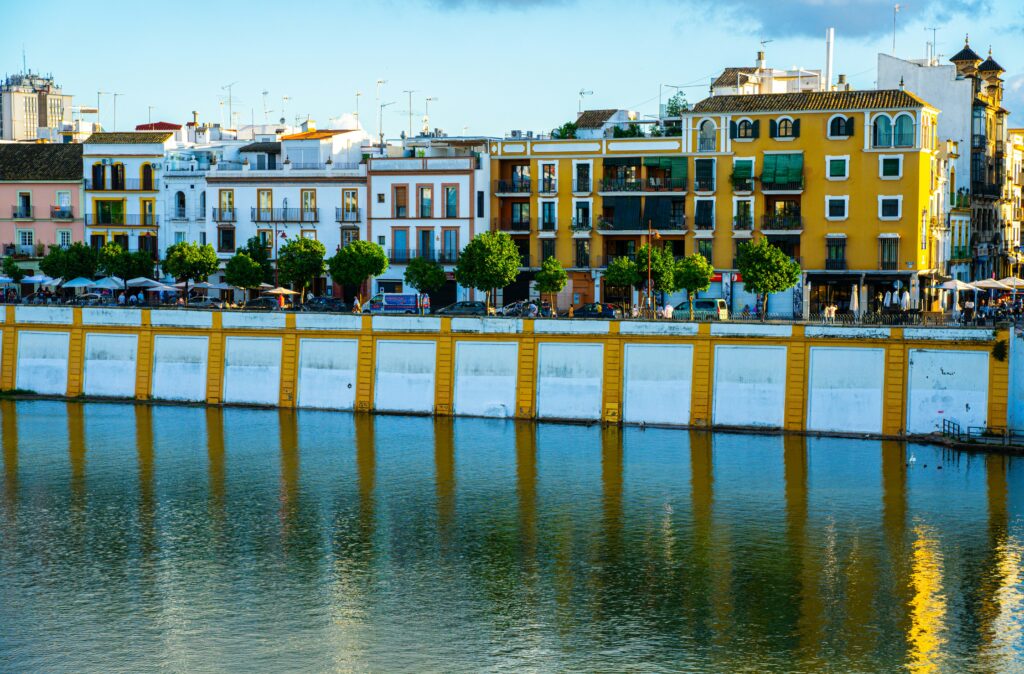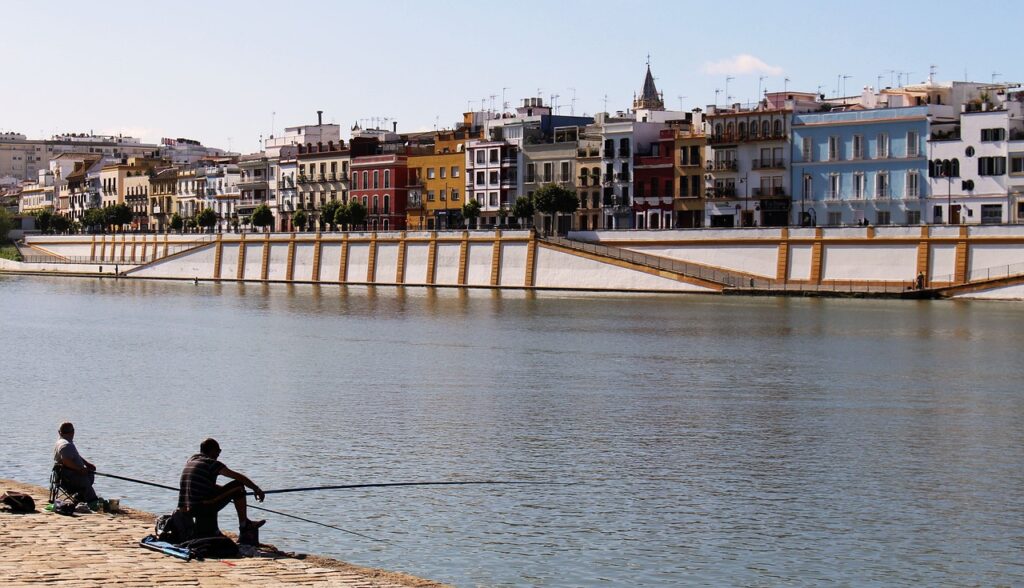Sevilla’s Guadalquivir: A Tranquil Escape
Sevilla’s Guadalquivir River
Discovering the Guadalquivir River
Discovering the Guadalquivir River is an exciting adventure in Sevilla. The river flows through the heart of the city, offering a unique perspective of Sevilla’s beauty and history. You can start your exploration by taking a leisurely walk along the riverbanks, enjoying the scenic views and the gentle breeze.
For a more immersive experience, consider taking a boat tour along the Guadalquivir River. From the water, you’ll get to see iconic landmarks like the Torre del Oro and the Triana Bridge from a different angle. It’s a relaxing way to learn about the city’s history while taking in the sights.
As you explore the Guadalquivir River, keep an eye out for wildlife like birds and fish that call the river home. You may even spot rowers gliding across the water or locals fishing along the banks, adding to the charm of your river adventure.
To enhance your experience, consider visiting riverside cafes or restaurants where you can enjoy a meal or a drink while admiring the views. Watching the sunset over the Guadalquivir River is especially magical, creating a picturesque backdrop for your time in Sevilla.
History and Significance of the Guadalquivir River

The Guadalquivir River holds a significant place in the history and culture of Spain, particularly in the region of Andalusia. Its name originates from the Arabic “Wadi al-Kabir,” meaning “great river,” highlighting its importance to the people who settled along its banks.
Throughout history, the Guadalquivir River served as a vital transportation route, connecting inland cities like Sevilla and Cordoba to the Atlantic Ocean. This strategic location made it a hub for trade, commerce, and cultural exchange, shaping the development of cities along its shores.
The river’s significance extends beyond its practical utility. It has been immortalized in art, literature, and music, serving as a source of inspiration for countless artists and writers. Its tranquil waters and scenic landscapes have been depicted in paintings, poems, and songs, capturing the imagination of generations.
In addition to its cultural importance, the Guadalquivir River has played a crucial role in shaping the natural environment of Andalusia. Its waters sustain a diverse ecosystem, supporting a variety of flora and fauna, including endangered species like the Iberian lynx and the Spanish imperial eagle.
Landmarks Along the Guadalquivir River

The Guadalquivir River is flanked by several notable landmarks that add to its charm and allure. One such landmark is the iconic Torre del Oro, or Tower of Gold, located in Sevilla. This historic watchtower dates back to the 13th century and served as a defensive structure during the Moorish period. Today, it stands as a symbol of the city’s rich history and offers panoramic views of the river and surrounding area.
Another landmark along the Guadalquivir River is the Triana Bridge, connecting the neighborhoods of Triana and Sevilla. This beautiful bridge, also known as the Puente de Isabel II, is adorned with ornate ironwork and offers a picturesque backdrop for strolls or romantic evening walks.
Further downstream, you’ll come across the Isla de la Cartuja, an island in the Guadalquivir River that is home to the Expo ’92 site. This former World’s Fair venue features modern architecture, landscaped gardens, and cultural attractions like the Andalusian Center for Contemporary Art.
As you continue along the river, you’ll encounter the Puente de San Telmo, a stunning suspension bridge that spans the Guadalquivir and connects Sevilla to the neighborhood of Triana. This bridge is a popular spot for locals and tourists alike, offering breathtaking views of the river and the city skyline.
Activities Along the River

Along the Guadalquivir River, there are plenty of activities to enjoy for visitors of all ages. One popular activity is taking a boat tour. These tours offer a relaxing way to see the city from a different perspective, allowing you to admire landmarks like the Torre del Oro and the Triana Bridge from the water.
If you prefer to stay on land, you can take a leisurely stroll or bike ride along the riverbanks. The scenic pathways offer beautiful views of the river and provide opportunities to soak in the sunshine and fresh air.
For those looking for a bit more adventure, kayaking and paddleboarding are popular activities on the Guadalquivir River. Renting a kayak or paddleboard allows you to explore the river at your own pace and get a workout while enjoying the water.
If you’re interested in history and culture, consider visiting the various museums and attractions located along the river. From the Torre del Oro to the Isla de la Cartuja, there are plenty of opportunities to learn about the rich heritage of Sevilla and Andalusia.
Lastly, don’t forget to relax and enjoy the riverside cafes and restaurants. Whether you’re sipping a coffee with a view or indulging in delicious tapas, dining along the Guadalquivir River is a delightful experience that shouldn’t be missed.
Parks and Gardens Along the Guadalquivir river

Along the banks of the Guadalquivir River, you’ll find several beautiful parks and gardens that offer a peaceful retreat from the hustle and bustle of the city. One such park is the Parque de los Principes, known for its lush greenery and tranquil atmosphere. Here, you can take a leisurely stroll, have a picnic, or simply relax and enjoy the scenery.
Another park worth exploring is the Parque del Alamillo, located near the Expo ’92 site. This expansive park features wide open spaces, shaded pathways, and recreational facilities like playgrounds and sports fields. It’s a popular spot for locals and visitors alike to enjoy outdoor activities and soak in the natural beauty of the river.
In addition to parks, there are also several gardens along the Guadalquivir River that are worth a visit. The Jardines del Real Alcazar, for example, are part of the famous royal palace complex in Sevilla and boast stunning Moorish-inspired design elements, including ornate fountains, lush vegetation, and intricately tiled pathways.
